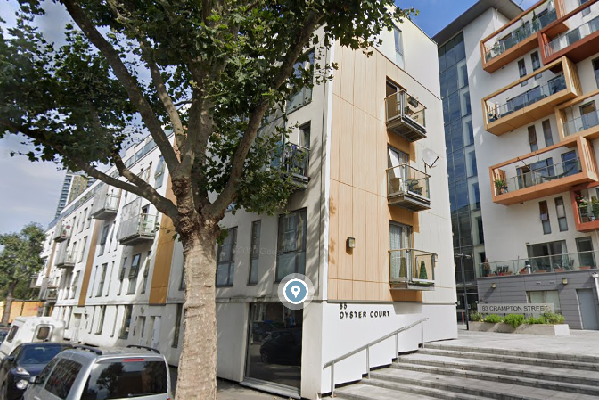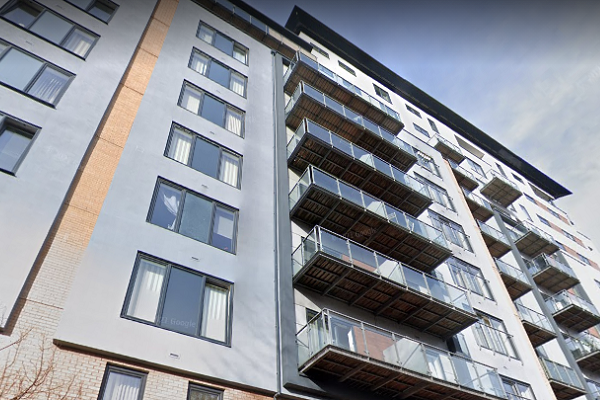You are viewing 1 of your 1 free articles
Draft government guidance resulted in decision to remediate below-18m block
New draft guidelines on the risk from external walls led a housing association to conclude that expensive cladding remediation work on a low-rise block was required despite government efforts to limit work on these buildings.

Papers shared with Inside Housing show that Optivo elected to remediate five-storey Oyster Court at a potential cost of £80,000 each to the 33 residents following an assessment based on a draft version of the new British standard for calculating the risk from external walls – PAS 9980.
This guidance, once finalised, will be used by fire risk assessors to carry out statutory assessments of the external walls of all blocks of flats under the government’s new Fire Safety Act, and is expected to eventually replace the controversial external wall system 1 (EWS1) form.
If the experience from Oyster Court is repeated elsewhere, this could mean tens of thousands of blocks continue to be deemed in need of expensive remediation with residents unable to access government support.
Papers seen by Inside Housing show that Optivo commissioned PRP Architects to review the south London block in September, asking the firm to follow the guidance set out in the draft version of PAS 9980.
PRP concluded that the consequence of missing cavity barriers, cars parked beneath the building and combustible rendered insulation on its external walls combined to create a “holistic view” that it was “high risk” and therefore required remediation.
Optivo has since put on hold its plans to remediate the building indefinitely – citing the government’s decision to pause a plan to offer loans to leaseholders to fund the work.
However, the original assessment marks one of the first real-world uses of the draft guidance and shows it may clash with the government’s broader effort to take buildings shorter than 18 metres outside the scope of the building safety crisis.
In July, former housing secretary Robert Jenrick published new expert advice that he claimed showed the risk in blocks at this height was low and called on the industry to stop recommending remediation for them as a result.
Ministers have since consistently insisted that most blocks “do not need expensive works” and accused the industry of “extreme risk aversion”.
Residents in buildings below 18 metres tall have no access to government support and face paying the full bill for works if they are deemed necessary for their building.
Dr Jonathan Evans, a cladding expert and chief executive of construction firm Ash & Lacy, said: “The key thing is the guidance doesn’t say what is safe. It gathers up a huge amount of information about risk factors and then leaves it to the fire engineer to make a holistic judgement.
“You are undoubtedly going to find combustible materials on these buildings and people will not want to sign off buildings that turn out to be unsafe, so they will adopt exactly the same approach as we have seen previously.”
He said that the government should have instead set out a specific check-box “matrix” where different materials made a building unsafe – such as combinations of highly combustible aluminium composite material, high-pressure laminate and combustible insulation in timber-framed buildings.
Other lower-risk types of buildings should have been specifically deemed safe, while “borderline cases” could have lower costs, such as fire alarms and sprinklers.
“There is a big resistance to saying what is safe, because they are afraid they will be blamed if there is a fire in one of those buildings,” he added.
PAS 9980 was developed by the British Standards Institute (BSI) and will be applied by fire risk assessors carrying out regular statutory assessments of the external walls under new fire safety legislation.
Government guidance continues to set no restrictions on the use of combustible materials below 18 metres tall, and prior to the Grenfell Tower fire, contained several loopholes permitting their use on taller buildings.
However, in autumn 2018 the government published ‘Advice Note 14’, which said that no combustible materials should be used on high-rise buildings unless justified by a large-scale test.
It followed this with a consolidated advice note in January 2020 that extended this to buildings of all heights, ultimately requiring building owners to seek an assessment from a surveyor (known as an EWS1 form) to determine the safety of the external walls.
The result has been a huge stalemate in flat sales, thousands of blocks failing assessments and hundreds of thousands of leaseholders trapped in unsellable properties and facing huge remediation bills.
Earlier this week when speaking to the Housing, Communities and Local Government Select Committee, Sir Ken Knight, head of the government’s expert panel on fire safety, said that he believed the external wall checks as part of fire risk assessments would replace EWS1 forms, and that this would remove some of the buildings “blighted by a perception of risk”.
There has never been an effort at a national level to identify or prioritise the most dangerous buildings.
A spokesperson for the Department for Levelling Up, Housing and Communities said: “It is unacceptable and unfair that leaseholders are facing excessive bills – they are innocent parties in this and building owners and industry must make buildings safe without passing on costs to them.
“The secretary of state has made clear, we are committed to ensuring leaseholders are supported and we will be setting out further proposals in due course.
“Most blocks of flats are safe and do not need expensive works, and we continue to drive extreme risk aversion out of the market by encouraging a more proportionate, evidence-based approach.”
A spokesperson for Optivo said: “We’ve taken the decision to delay the start of fire remediation works to the building facade at some of our blocks, including Oyster Court. One of the reasons we’re delaying is the continued uncertainty over government guidance.
“Only this month, housing secretary Michael Gove announced the government’s £50-a-month loan scheme is being ‘paused’. We (and our leaseholders) had been waiting months for details of this scheme. We’re now left waiting again for further information on how the government will be supporting leaseholders and housing associations through the building safety crisis.”
On the use of PAS 9980, it added: “We asked fire safety experts PRP to carry out an initial assessment under draft PAS 9980 as we understand the principles of the document are unlikely to change when the final format is agreed. The assessment, along with all other available documentation, was reviewed by a project panel, including Optivo, our independent fire engineer and PRP, to determine the risk level of the building and to ensure our previous assessment was proportionate.
“Oyster Court was deemed high risk due to the materials installed on the external wall system, the amount and their location. Although other options were explored, it was concluded the most effective course of action was to remediate the block at Oyster Court. Further assessments using the draft PAS 9980 methodology haven’t changed the remediation decisions previously made.”
Sign up for our fire safety newsletter
Already have an account? Click here to manage your newsletters



